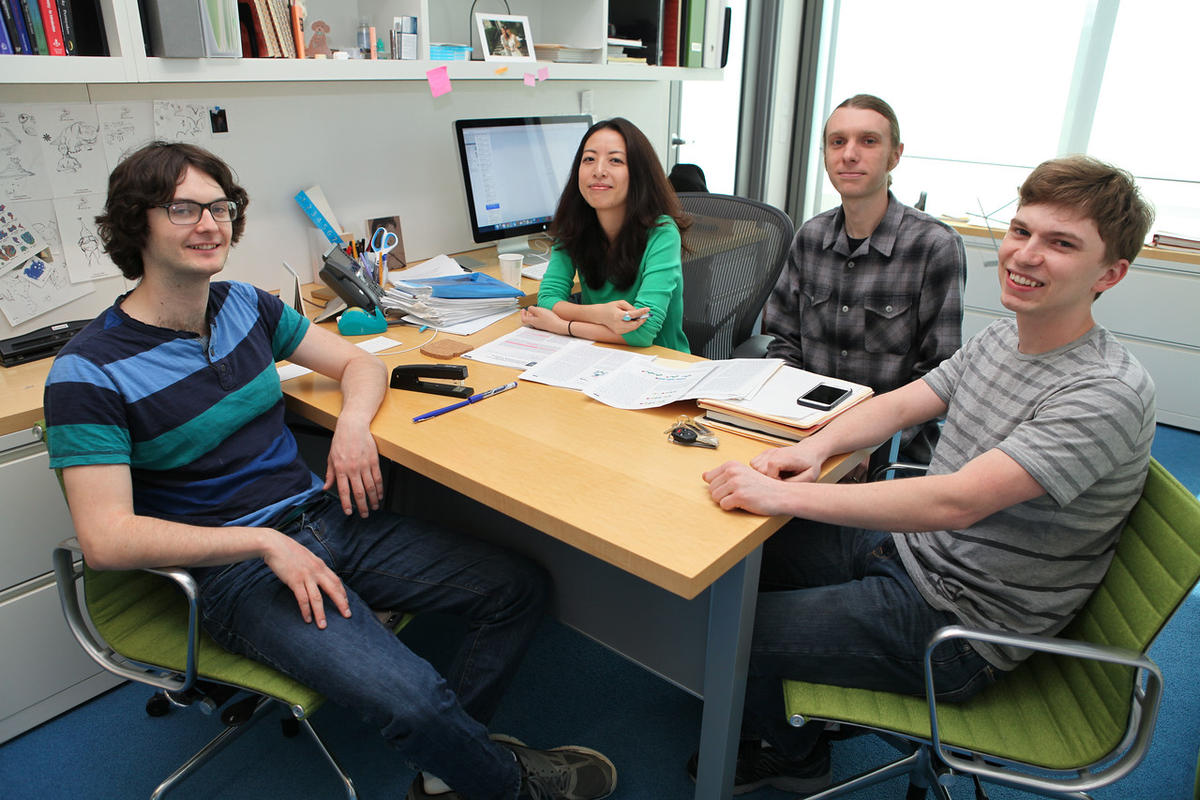Creating order out of chaos in biological X-ray scattering
For most of its history, the field of biological X-ray scattering has elucidated static structures of proteins and other vital macromolecules.
Generally speaking, it has been successful in this regard: to date, X-ray crystallography has been used to determine the intricate architectures of over 100,000 proteins. In turn, these detailed, three-dimensional maps enable drug development and deepen scientific understanding.
But the Ando lab at Princeton University believes that biological X-ray scattering has far from reached its full potential.
In a recent review article, Ando lab researchers outline the possibilities for the field which, according to them, is still in its infancy. Published in Chemical Reviews, the article provides a clear summary of the untouched possibilities for biological X-ray scattering, which include using X-rays to probe not just static structures, but also protein dynamics.

Photo by C. Todd Reichart
“Our review provides the first comprehensive overview of this new field, which uses X-ray scattering to go beyond the average structure,” said Steve Meisburger, a postdoctoral researcher in the lab and co-first author of the review. “It is clear that the field has only begun to tap the potential of these techniques.”
The review is ambitious in its treatment of new scattering techniques. The driving question behind the review? As assistant professor of chemistry Nozomi Ando puts it, “What are the most advanced things we can do with X-ray scattering?”
One of the answers to this question explored in the review is the clever use of a technique known as small-angle X-ray scattering, or SAXS. As a low-resolution structural technique, SAXS is often used only to obtain supporting information for crystallography experiments. But Ando argues that this is a naive use of the method.
“SAXS is best used when employed to probe behavior, and not as a structural determination technique,” said Ando. When used in this way, it can answer questions of great interest to biochemists, such as how proteins are regulated or how a family of proteins could be related via evolution.
Such advanced uses of SAXS in investigating enzymes are detailed in the review. To highlight these examples, the authors present figures made from raw data shared by the original investigators. Other exciting avenues for SAXS are outlined in the review, including the potential of SAXS to elucidate the motions of megasynthases, which has never been done before.
The innovative techniques described in the article don’t stop there. Like SAXS, X-ray crystallography can also give insights into protein dynamics. Molecular disorder in a crystal manifests as a weak, continuous signal known as diffuse scattering. This signal has only been studied in the context of biological molecules a handful of times, but it shows promise.
“For many, I think diffuse scattering will be the most exciting technique [in the review], since at the moment, it’s the technique that is most novel and still in its infancy,” said Will Thomas, a second-year graduate student in the Ando lab. “While SAXS is more developed and fine tuned, diffuse scattering is exciting simply because we’re still just discovering what may be possible.”
Post-doctoral researcher Meisburger echoed this sentiment.
“New detectors available in the last several years promise to make diffuse scattering measurements routine,” he said. “I am most excited by the prospect of using diffuse scattering from crystals to learn about the very subtle molecular motions that underlie allosteric regulation in some proteins.”
The nature of outlining complex problems in a new field meant that writing the review was a challenging task.
“This project was so much larger in scope than anything I’d done before,” Thomas said.
But, according to lab members, it was well worth the effort. In addition to a compelling review article, the project produced some unexpected research questions.
“One of the most unique parts of working on the review, for me at least, was that in my literature search I managed to stir up some old controversies,” Thomas said.
“Investigating inconsistencies between different researchers’ studies led to a renewed spark of debate in these studies, and ended up with us doing some work of our own to come to a logical solution,” he said. “I didn’t expect to be doing something akin to original research while writing the section, but interestingly enough, it happened anyway.”
Read the full article here:
Meisburger, S. P.; Thomas, W. C.; Watkins, M. B.; Ando, N. “X-ray Scattering Studies of Protein Structural Dynamics.” Chemical Reviews 2017.
